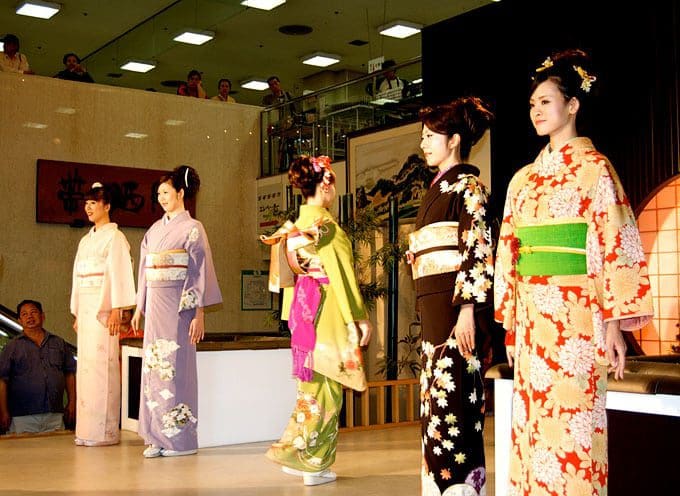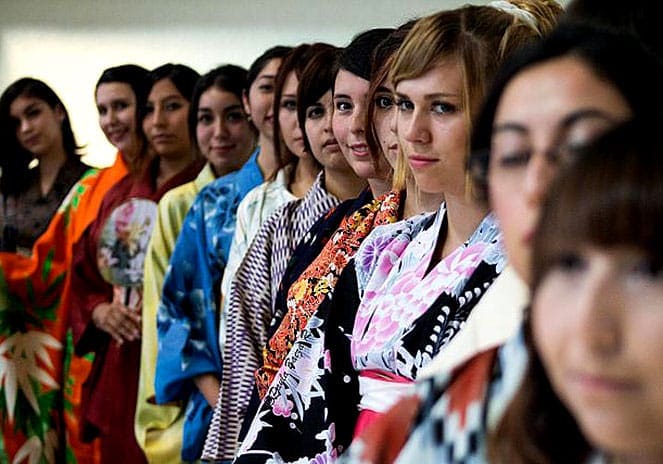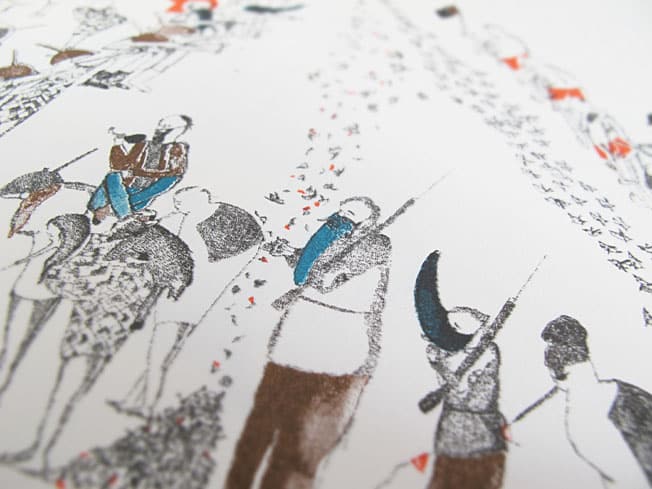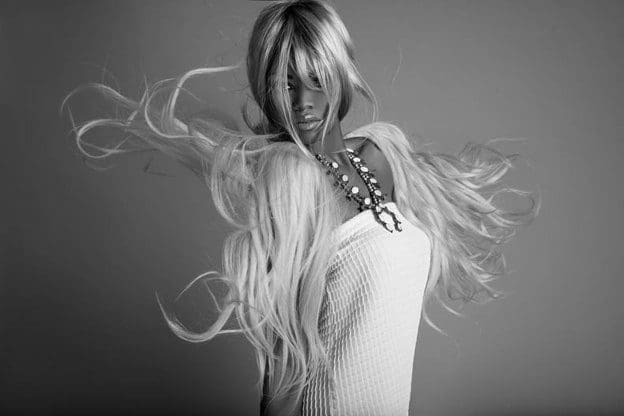words Alexa Wang
In March 2017, Vogue magazine became embroiled in a high-profile controversy over a ‘Geisha’ photoshoot that featured supermodel Karlie Kloss dressed in a traditional Japanese kimono as fashion with hair, makeup and among a stereotypical scene.
While Vogue claimed it was celebrating diversity. Critics slammed the ‘racist’ and ‘yellowface’ shoot, condemning the spread as a blatant case of cultural appropriation.
The controversy, however, raises interesting questions about the meaning of traditional forms of dress, like the Japanese kimono, as a form of cultural appropriation. It does nothing to alleviate the difficulty we have when drawing the line between cultural appropriation and fashion in the context of the global world we live in today.
What is the cultural importance of the kimono?
Kimono, which translates as ‘thing to wear’, is a traditional style of formal dress in Japan. The kimono as fashion dates back to the Muromachi period (1392-1568), and is worn by both men and women. Kimono are made of patterned silk, and are recognisable as a multi layered, full-length garments with wide sleeves and tied with a sash.
Since the kimono first gained popularity, styles have evolved to denote the wearer’s social rank and occupation. This makes it a particularly symbolic form of dress, and there is an associated set of rules called kitsuke for wearing kimono and yukata (the more casual form). For example, kimono and yukata should always be worn with the left panel over the right because it is customary in Japanese culture to dress the dead with the fold right-over-left.
Failing to understand the subtleties behind these small details—and getting them wrong—only makes it clearer that those ‘appropriating’ traditional forms of dress are ignorant of it’s cultural significance. This is more likely to be seen as disrespect.
For this reason, you should never underestimate the importance of anti-racism training before wearing something like the outfit. Furthermore, cultural understanding is particularly crucial when you are interacting with or portraying a culture that is not your own.
Is there a case for cultural appropriation?
Our general understanding of cultural appropriation is when people take a specific aspect of a culture and make use of it without fully understanding the traditional and symbolic meanings of it. Considering the cultural and social significance of the wearing of the Japanese kimono, it seems there’s good reason to complain.
Back in 2013, Katy Perry was lambasted for dressing as a geisha for her performance at the American Music Awards. Reported as “the racist equivalent of performing in blackface”. Perry was accused of playing into the white fetishisation of Asian women with no regard for Japanese culture.
It certainly stands to reason that the decision to clothe high profile western women in traditional Japanese dress showed a disregard for the subtle symbolism of the kimono in Japanese culture. Neither woman wore the kimono as kitsuke dictates. Many also pointed to the fact that Asian model Liu Wen also graced the cover of that issue of Vogue, and wondered why she hadn’t been chosen for the spread instead.
But shouldn’t fashion celebrate diverse cultures?
While the appropriation of traditional dress has sparked controversy when it disregards an understanding of that culture, there is a case for cultural appreciation too. Given the increasingly international reach of the fashion industry, it’s surely no wonder we, as audiences, are being exposed to ever more culturally diverse forms of dress.
With regards to the kimono fashion trend, some would even welcome the fashion industry’s interest as a way of saving the kimono industry which has long been in decline. This, at least, was the message iterated by employees at the Nishijin Textiles Centre in Kyoto. Meanwhile, a new publication from Bloomsbury The Secret Life of the Kimono looks to challenge the outfit’s staunchly traditionalist perception. Those from the streets to the catwalk came to see the kimono as fashion and an important vehicle for self-expression.
In fact, those who came down in support of Perry’s rather extravagant performance have suggested that we should instead read it as an example of cultural pluralism. If we’re moving towards a more plural, ever-globalised society, should we not expect icons from one culture to build bridges to others? Perry’s performance was largely a celebration of the beautiful aesthetic of Japanese culture, one that resonates in a modern world.
Where do we draw the line between appreciation and appropriation?
Perry largely got away with her gaffe because, as commentators pointed out, there were no fake accents or eyelid jokes – this wasn’t blatant ‘yellowface’. But Kloss struggled with her Vogue spread because it flew in the face of the message of diversity and inclusivity that graced the cover.
This, incidentally, isn’t the first time Kloss has gotten herself in trouble for cultural appropriation. In 2012 she had to apologise for wearing an American Indian-style headdress for a Victoria’s Secret catwalk show. Unsurprisingly, there was uproar from members of the American Indian community and others over the explicit sexualisation of the important symbol.
The case for cultural appropriation or cultural appreciation seems to be about one thing, intent. Understanding and respecting the traditional and cultural meaning of a certain mode of dress is surely a case of appreciation. Taking something as iconic as the kimono as fashion (or the Native American headdress for that matter) which is formal dress in Japan, simply for it’s aesthetic appeal is ignorant. That’s where the problems arise. It is a fine line, but one we can only hope to walk with a better understanding of what important symbols like this mean.








